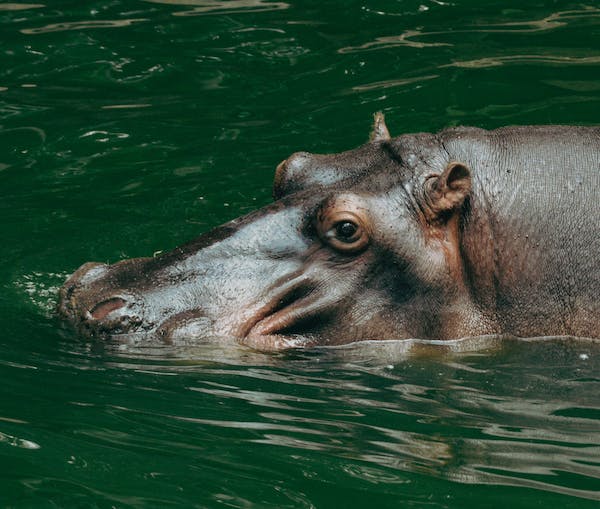All the private game reserves located in the middle of Okavango Delta and Chobe National Park are charmed with water, either from marshes, rivers, or lagoons.
Linyanti Wildlife Reserve is situated on the southern banks of the Linyanti River, which is a place where the landscape switches from marshland to the lake and winding waterways, leading to clear grassland and fluvial forest. The total area occupied by the Linyanti Wildlife Reserve is 275,000 acres.
The Linyanti River (which is later named the Chobe River), forms a natural border between Namibia and Botswana. The river’s course is smooth and gentle until it hits a volcanic fault line, which causes a dramatic 90-degree change, from south-east to north-east.
Inside the right-angle corner created at this juncture, a swamp has formed (on the Namibian side), similar in appearance to the Okavango Delta, with papyrus lined waterways leading to towering riverine forests of giant ebony and marula trees.
The Linyanti Reserve is highly populated with animals, particularly in the dry winter months, when elephants concentrate in enormous numbers at the rivers and waterholes. The reserve is contemplated as the alluring part of the Chobe National Park.
The ideal time to visit the reserve is between July and August because during this period, young pups come out from their dens. Massive concentration of wild dogs can be found here as well. However, they are on the edge of extinction; approximately 5,000 wild dogs exist in the wild today.
Thousands of zebra spend the winter in the Linyanti before heading south to the Savuti in November in expectation of summer rains and good grazing. The particularly beautiful sable and roan antelopes are found here, and red lechwe and the aquatic sitatunga antelope inhabit the wetlands.
The main predators are lion, leopard, cheetah, wild dog and hyena. A smaller carnivore and efficient predator sometimes seen, is the serval. This feline catches rodents and birds by silently pouncing on them and has a creditable 50% success rate. Bat-eared foxes are the cutest of the small carnivores and prey on insects, scorpions, mice and small birds.
The Linyanti reserve has a peak congregation of Giraffe, which cater to ample acacia trees, whereas, Cheetahs find the open regions of the Savute Channel ideal for running down their prey.
Birdlife is abundant here and particularly vocal with a magnificent dawn chorus. During the green season, several different varieties of birds migrate here. Carmine bee-eaters are found to be nesting on the banks of the Linyanti River. Daytime noises include incessantly grunting hippos and trumpeting elephants, while the night brings roaring lions and laughing hyenas.
The forest, the Savuti Channel, and the Linyanti River are the three characteristics of the Linyanti Reserve. Each of these is with a distinct territory from the Okavango Delta and is packed with magnificent ecosystems that highly support African wildlife.
The area between Linyanti River and Kwando is filled with the Linyanti Swamp, which occupies the area of 900 square meters. The flooding of the bordering Kwando and Linyanti Rivers resulted in the formation of the Linyanti marshes, a reserve of 900 square kilometers.
Marshes are concealed and spongy, and during the dry season, they attract buffalo and elephant to the region. The Linyanti marshes encircle on the river for a little segment of the river on a distant eastern edge of the swamp. The secluded feature of Linyanti makes it an ultimate destination of Botswana.
Linyanti Tented Camp, Duma Tau, Savuti Camp, and King’s Pool are the four small camps. Duma Tau is located in the west of King’s pool. It stands near Zibadianja Lagoon, which is the origin of Savuti Channel. Duma Tau has ten large walk-in tents positioned on a wooden deck.
King’s pool is one of the most opulent camps in Botswana. It has nine luxuriant thatched suites: all overlook an ox-bow, hippo-filled lagoon. Whereas, the Savuti Camp is away from flowing rivers.
Access to this zone is confined. To access the camps, you need a 4×4 vehicle because of the rough pathway and thick sand. Therefore, most of the tourists travel by light aircraft into the faraway airfields.
The Savute Channel
Until 2008, the Savute Channel was a dry waterway connecting the Linyanti River with the inner of the Chobe National Park. The channel stopped flowing between 1980 and 2008 and then unexpectedly started flowing again.
During the dry period, it is a broad plain and home to innumerable animals, including Wildebeests, Zebra, and Impala, as well as abundant predators such as Wild dog, Lion, and Cheetah. During rainy seasons, when the channel is in flow, it supports many water birds, hippos, fish, crocodiles, and other aquatic life.
Activities
In the Linyanti area, you can enjoy all types of tasks, which include fishing, day and night game drives, birding, and boating.
Best Time of the Year to Visit
From June to October is a great time to travel as you get to see grand herds centralize around the river. If you go on a trip in November or April to June, you can still get an excellent view and outstanding value. But, from December to early April, you should avoid visiting these areas.
Seasons
- Rainy Season
Rain falls during the warm months of November to March, creating high temperatures and humidity. Mosquitoes breed well in these conditions.
- Dry Season
May to October is dry, and as the months progress and surface water become scarce, animals congregate in huge numbers along the river. The game is at its most dense and easily visible. October is the hottest month.
Highlights
- What makes Linyanti Reserve an exclusive safari getaway is its remote location and relative inaccessibility.
- Linyanti Reserve is an excellent add-on to any Okavango Delta itinerary
- As Linyanti is a private reserve, you can do guided tours, off-roading, night drives, fishing, and even sleep outs in different hides.
- The land consists of a great number of herbivores and predators.

